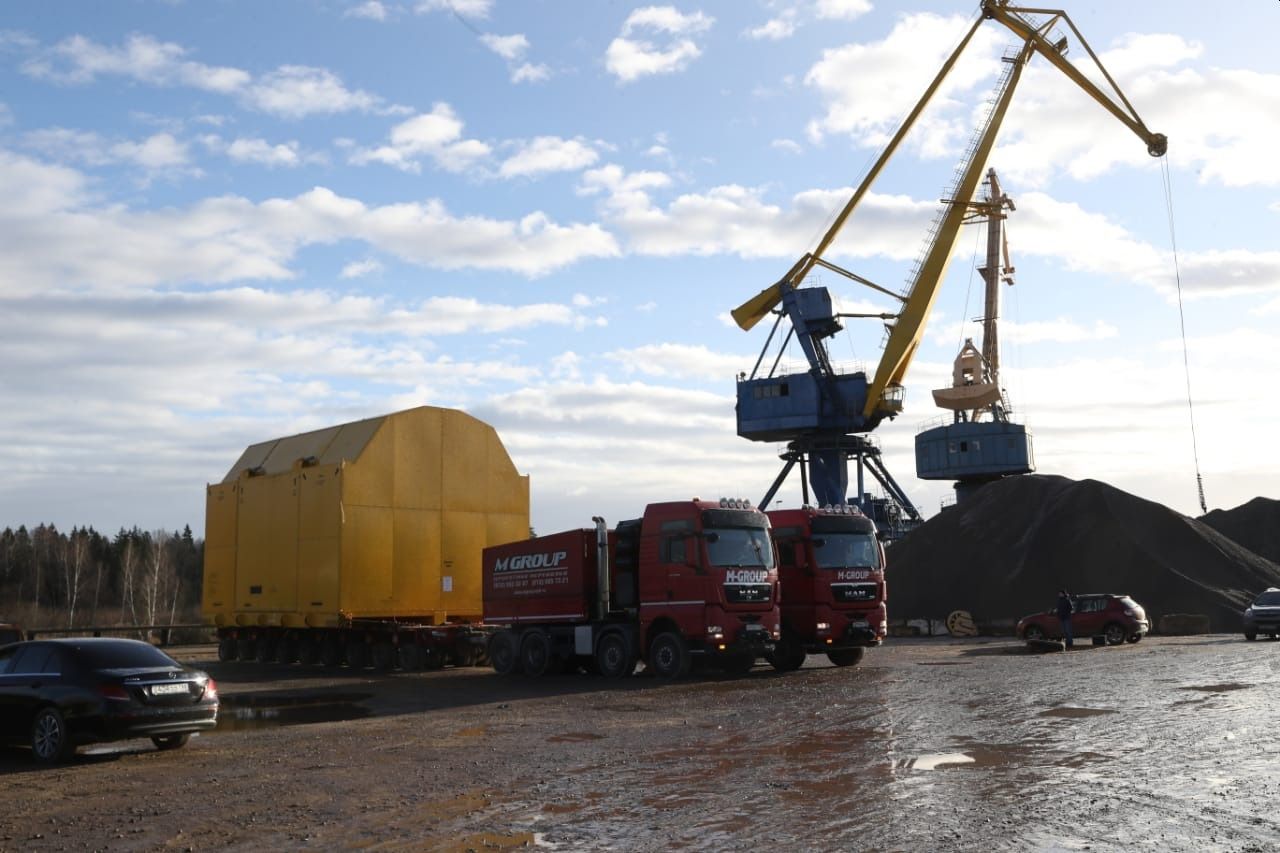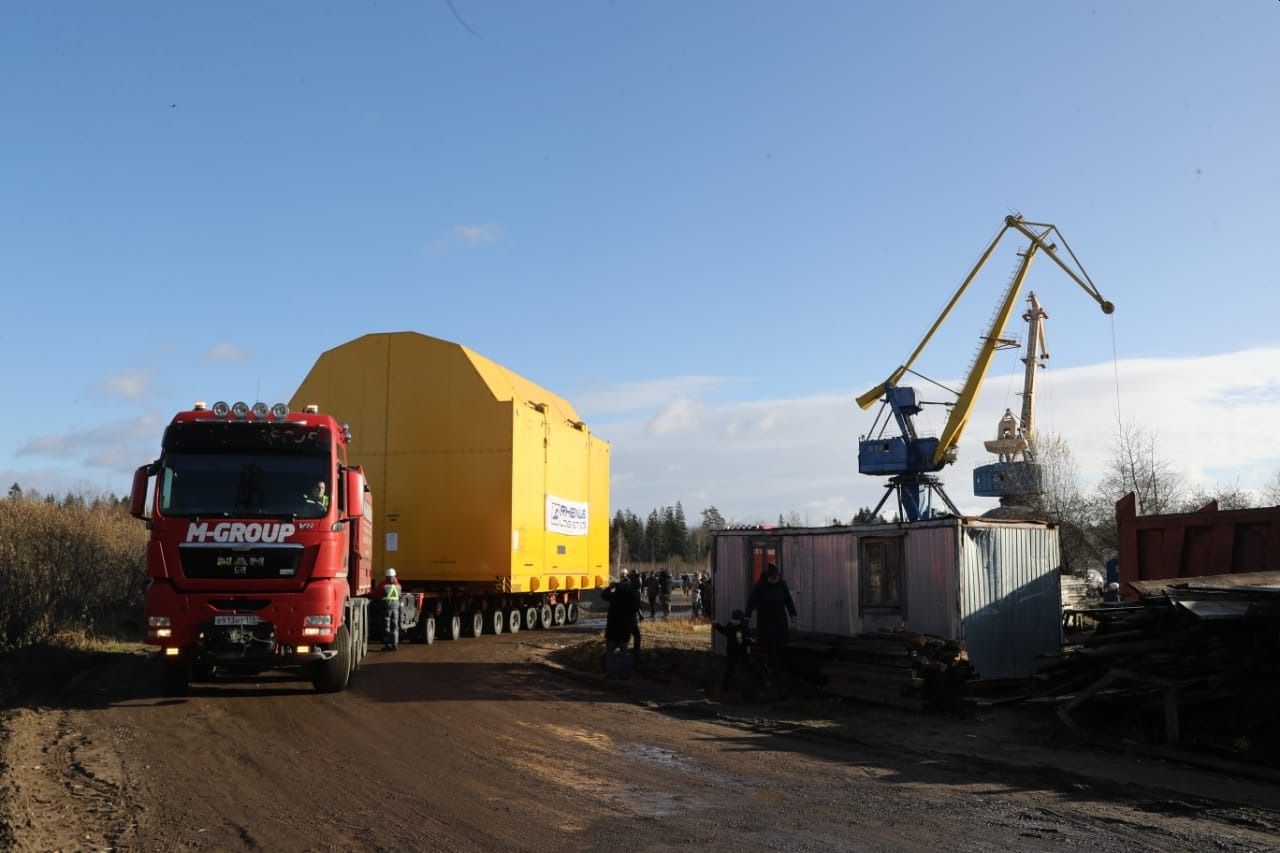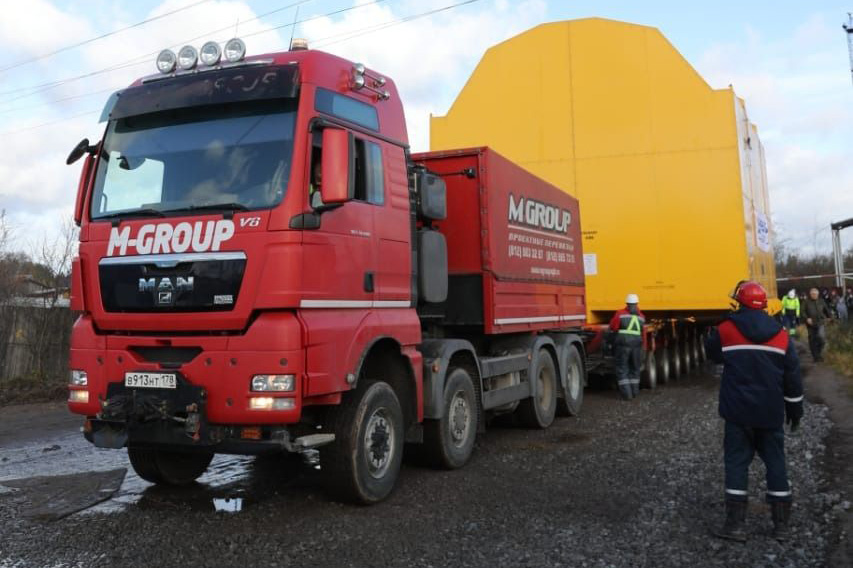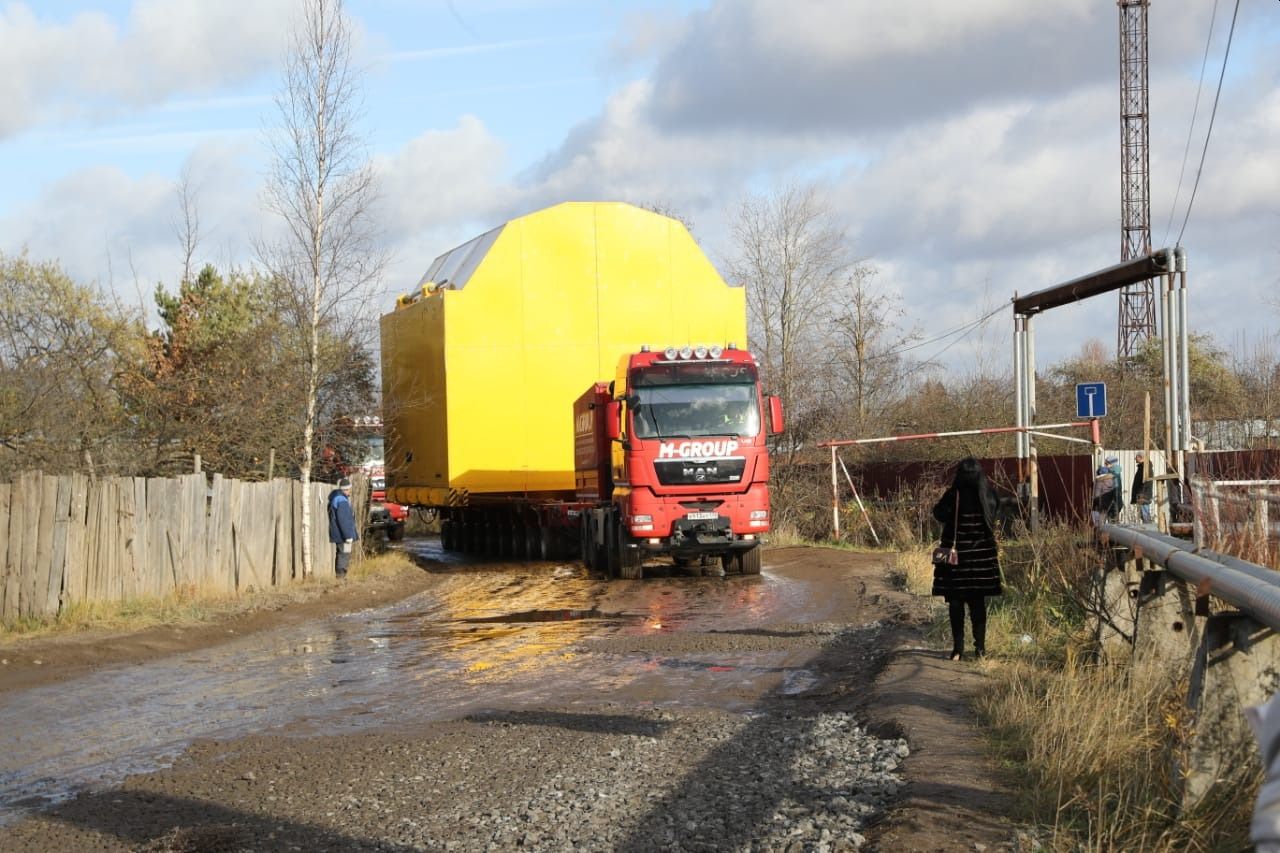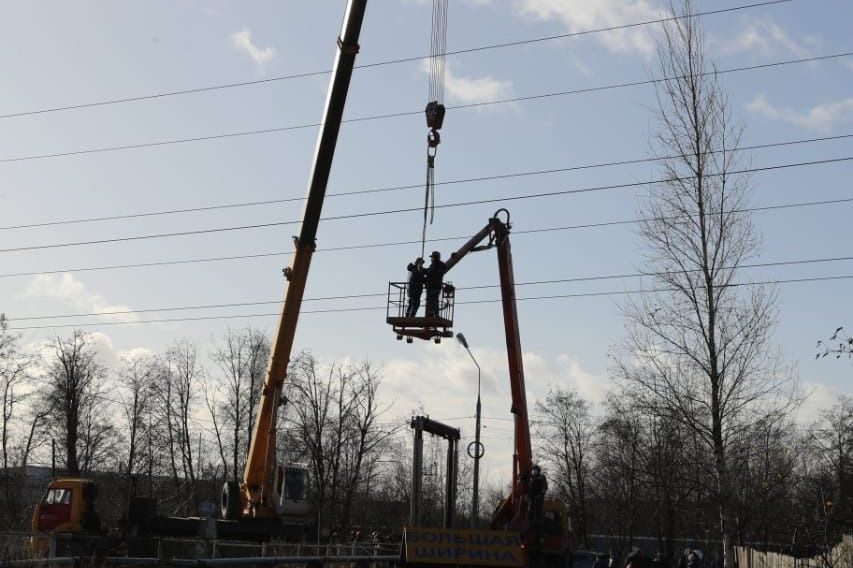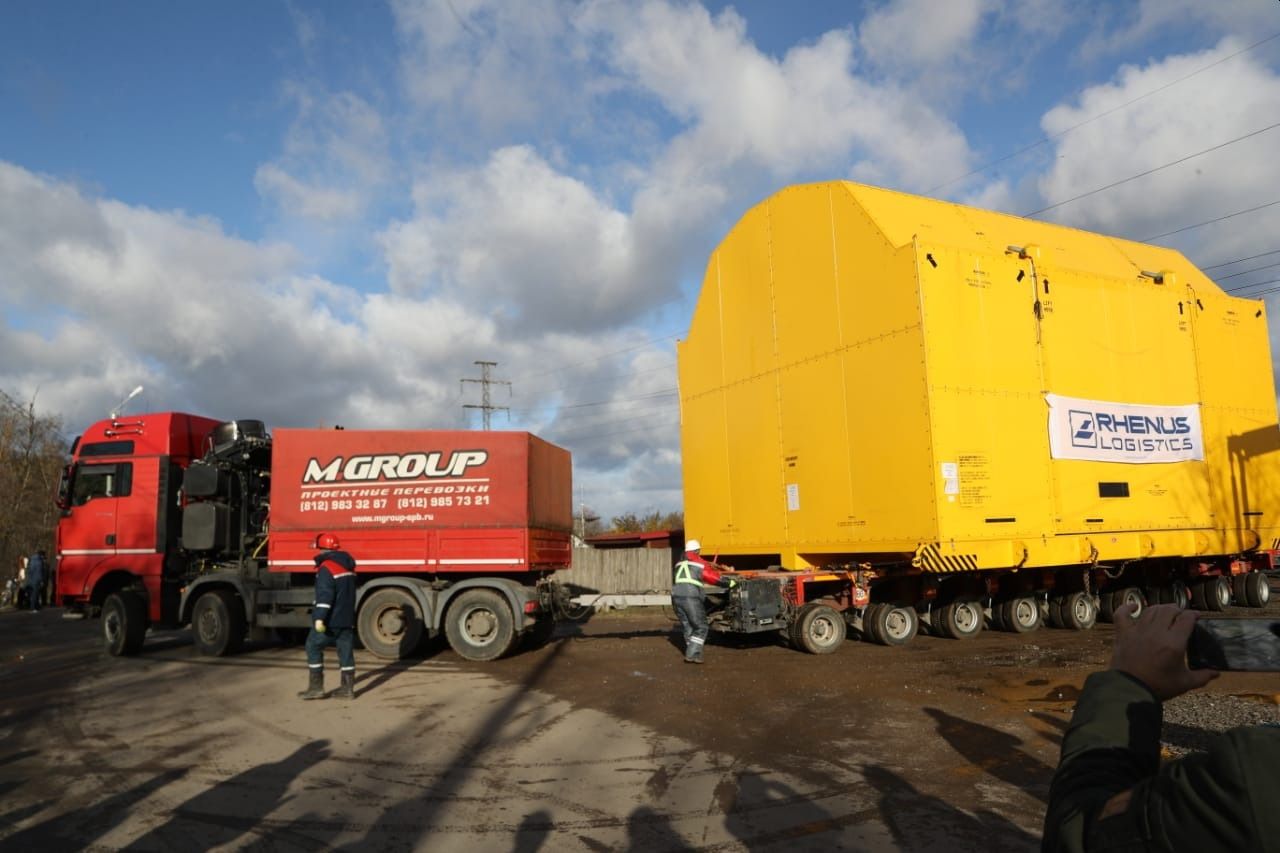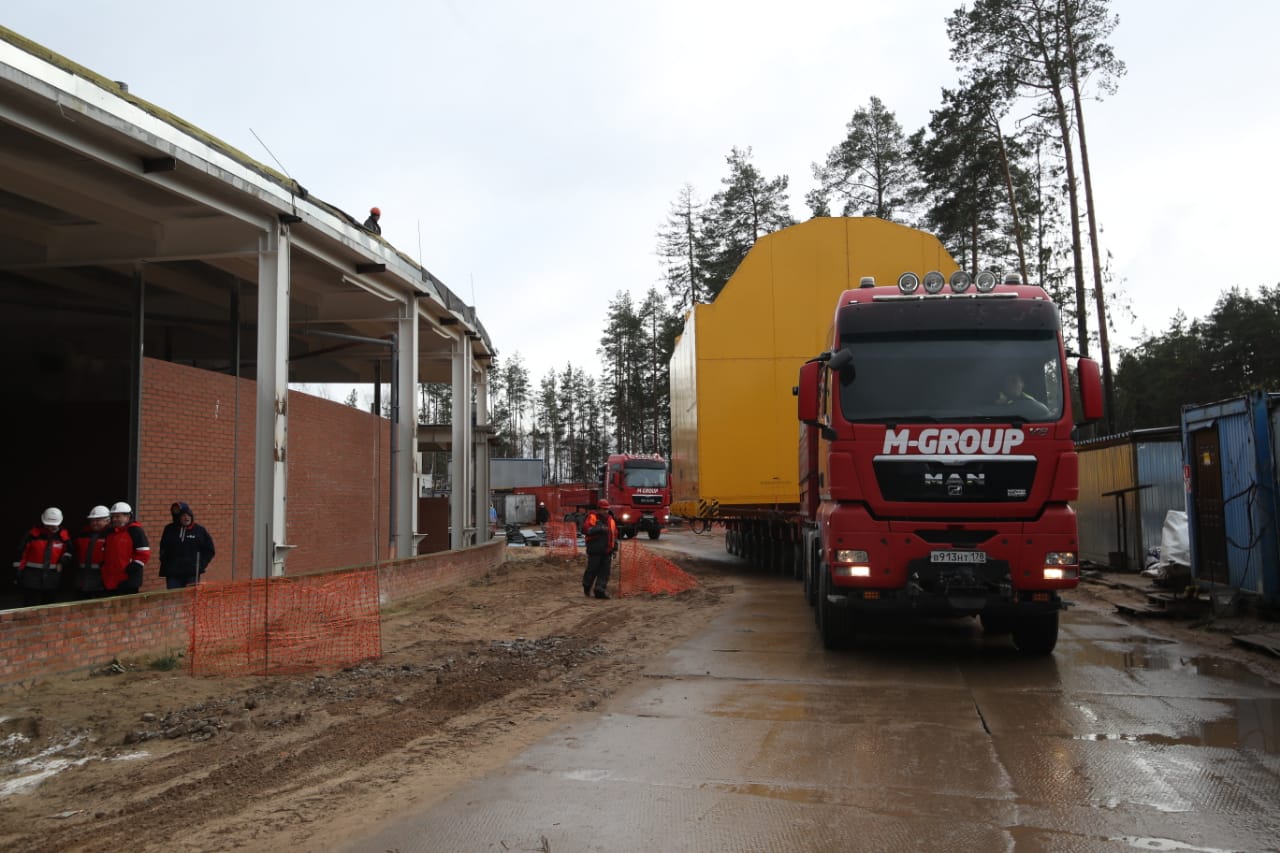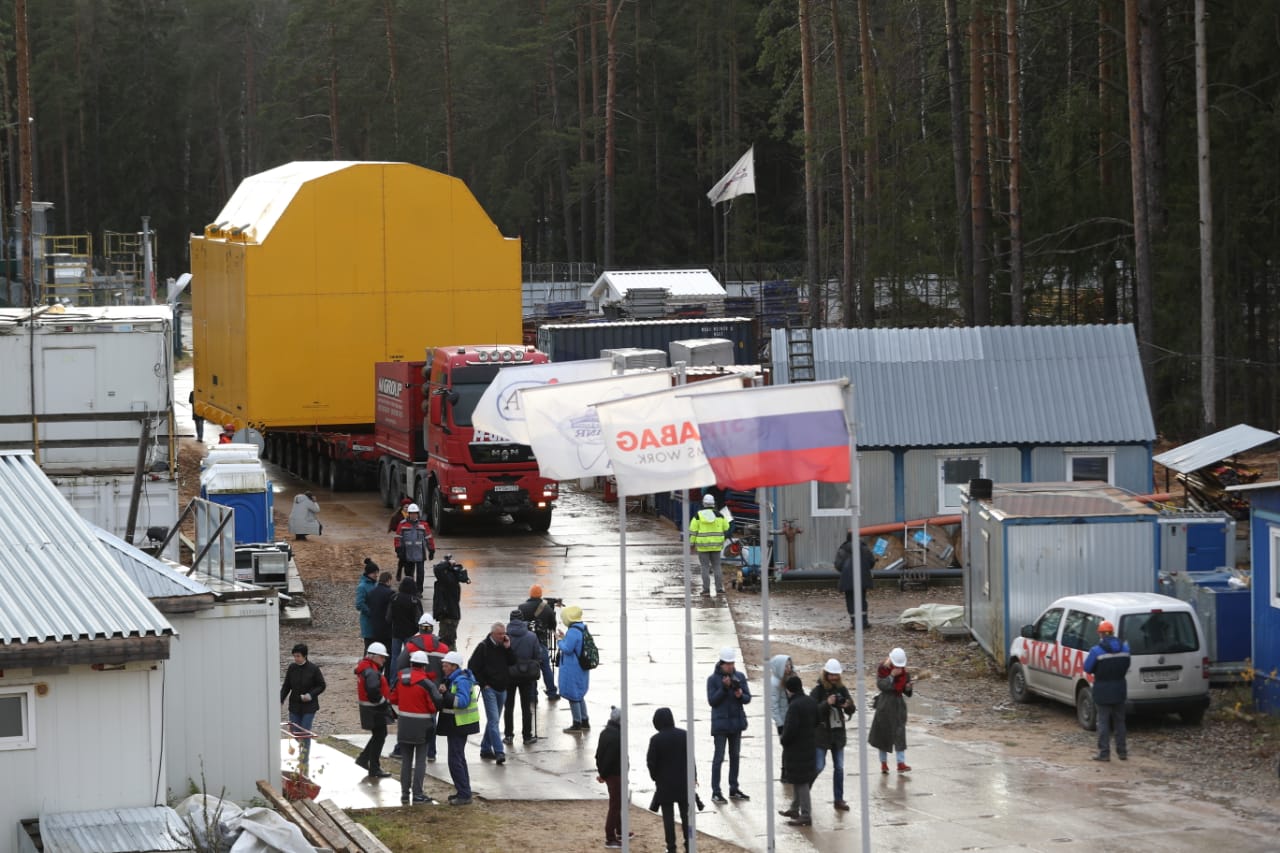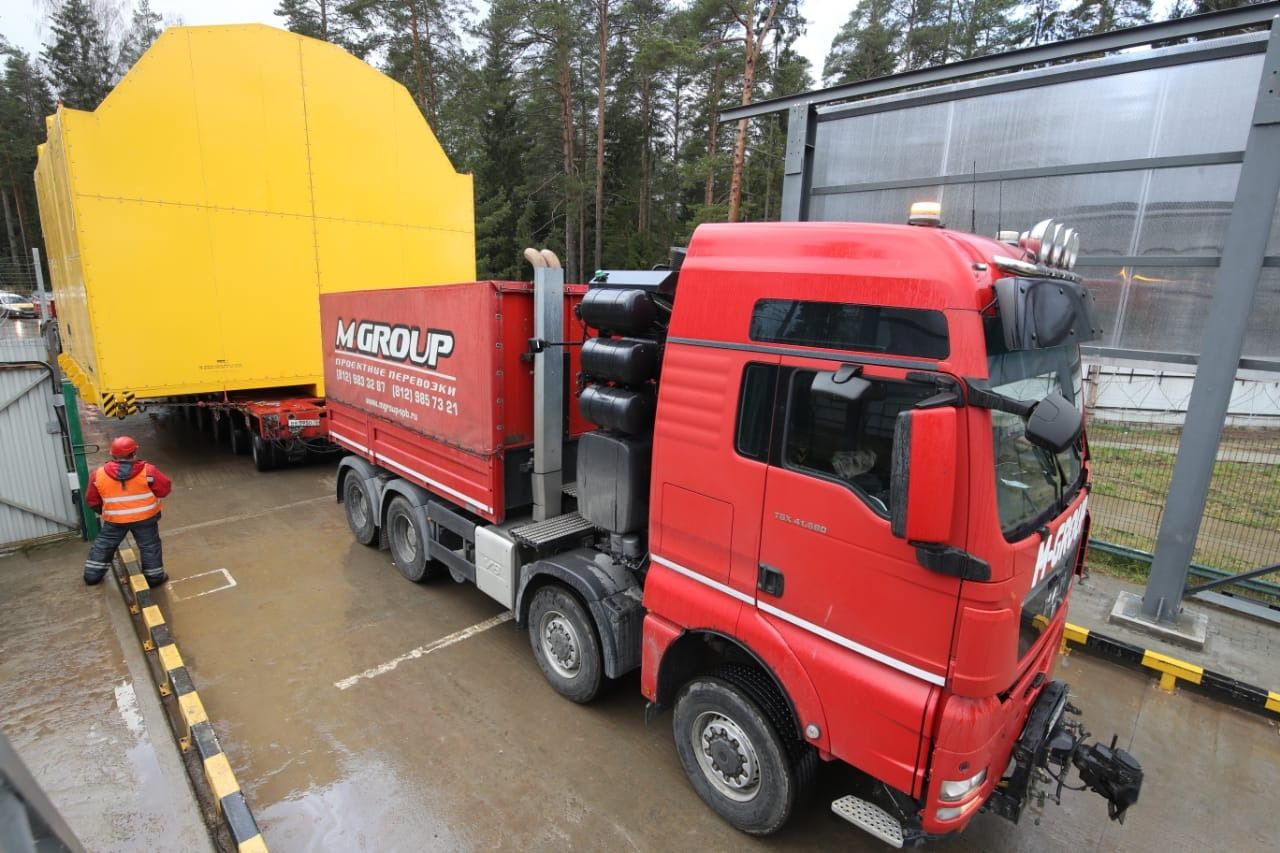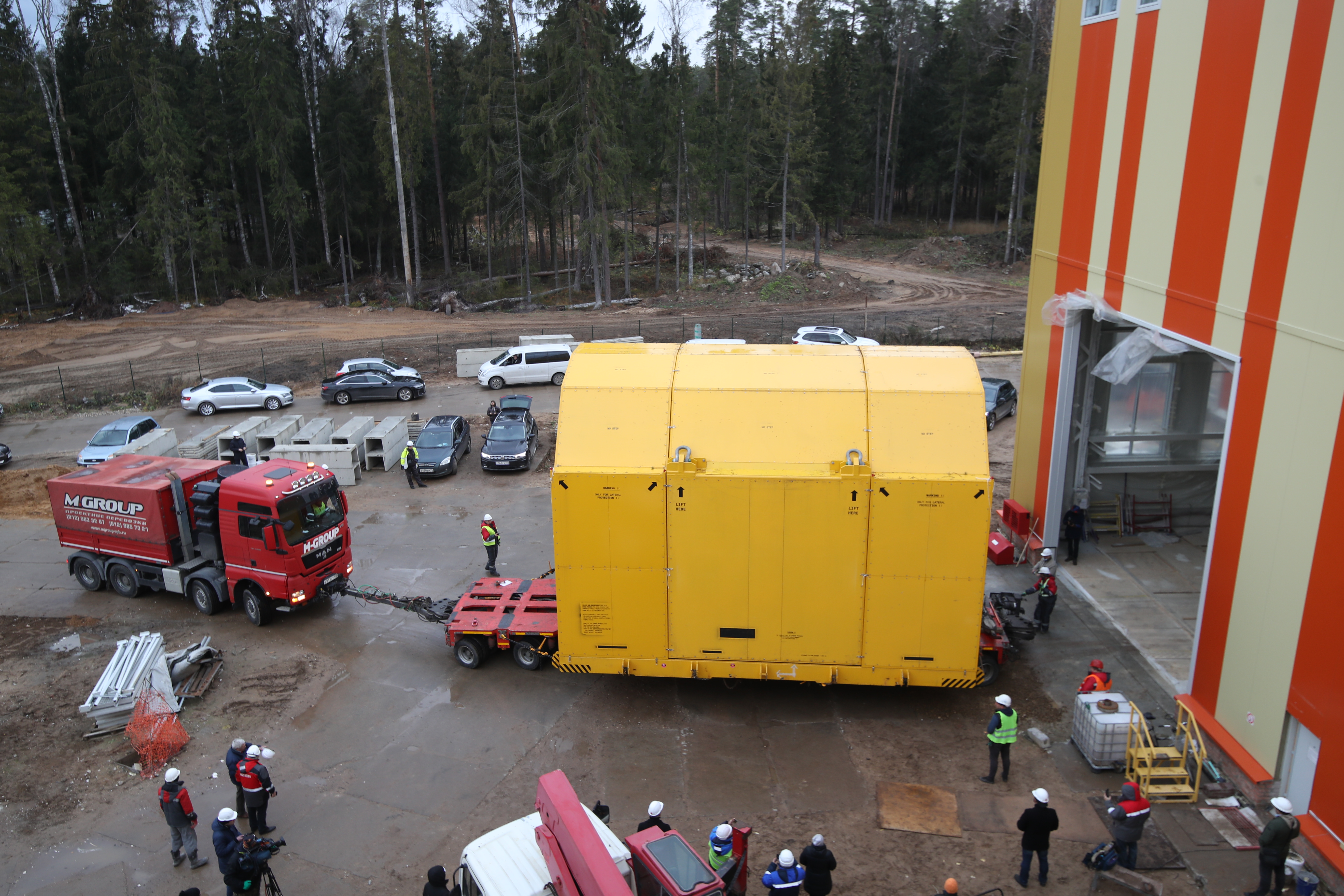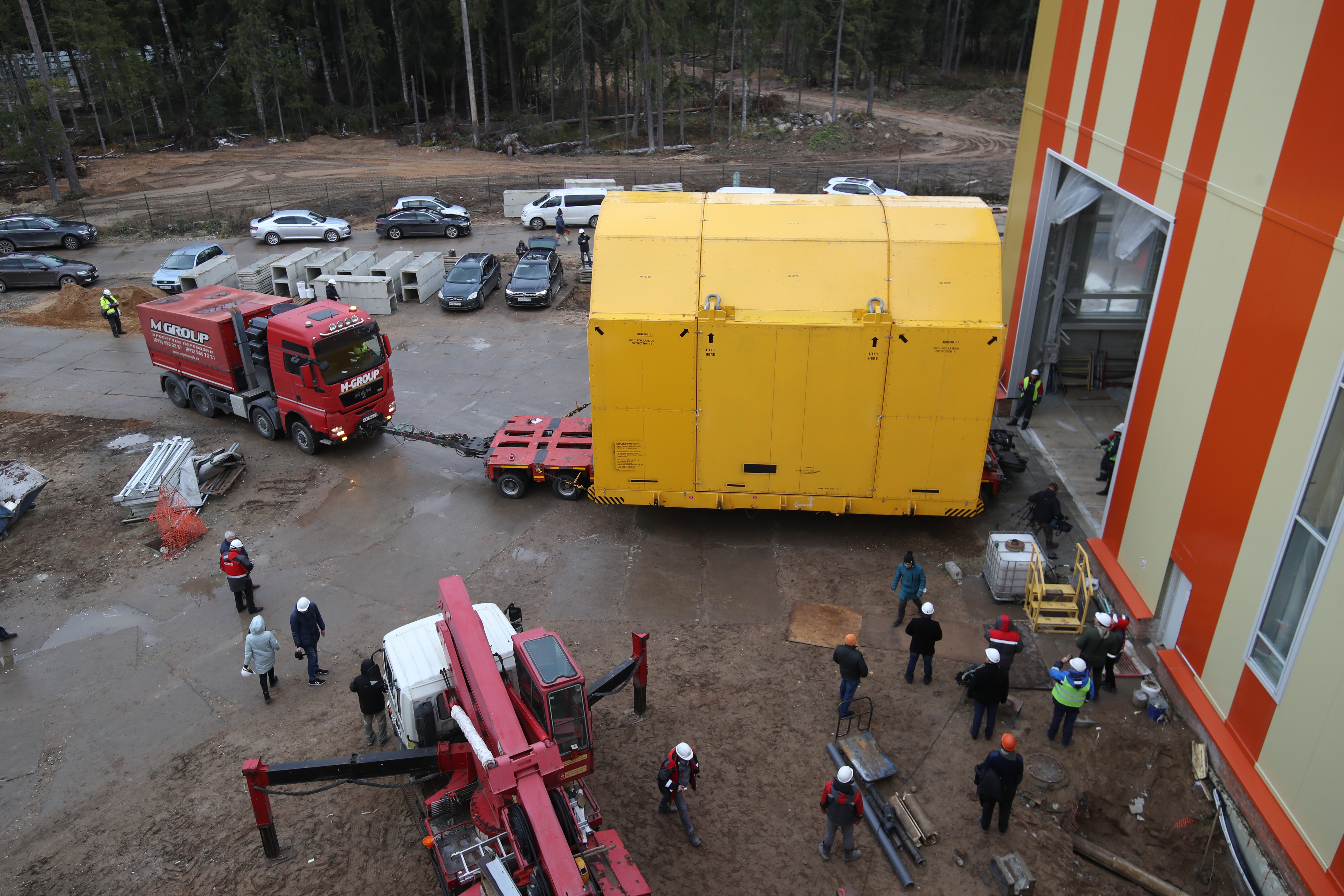MPD facility at NICA collider received its key element
News, 06 November 2020
On 6 November 2020, the superconducting magnet, i.e. the key element of the MPD research facility of the NICA accelerator complex, was successfully transported. Today, the sarcophagus with the cryostat containing the superconducting solenoid MPD with the full package of peripheral equipment was transported from the port on the Dubna river to the MPD pavilion.
This logistics operation unique in terms of scales and difficulty was successfully performed thanks to well-coordinated work of specialists from transport and logistics companies. In order not to damage the superconducting coil weighing 70 tons, it was placed inside a sarcophagus equipped with shock sensors. The sarcophagus with a total weight of 120 tons was carefully transported around Dubna by a tractor unit with a capacity of 680 horsepower. Each of its 72 wheels had a load of about 2 tons.
Despite the short distance (the way from the port to the MPD pavilion is just 2,8 km), the transportation took about 3 hours: the speed of the tractor unit did not exceed 2 km/h, since the delicate cargo required maximum accuracy and careful attitude. The height of the sarcophagus with the transport platform was 7,6 m, and it significantly complicated its movement around the city. It was necessary to temporarily de-energize the right-bank part of Dubna almost completely and to dismantle electric cables and some city communications that obstructed the transportation.
At about 3:00 PM, the sarcophagus was delivered to the MPD pavilion at the VBLHEP site and installed at 4 steel cubes, which had been specially designed for it. Each of them can carry about 30-40 tons. The sarcophagus will be stored there until the arrival of Italian specialists, representatives of the manufacturing company. According to the provisions of the contract, the sarcophagus cannot be opened without them. As soon as it is done, JINR specialists together with Italian colleagues will assemble and install the solenoid in the iron yoke of the magnet with a total weight of 700 tons. Installation of the yoke started in July 2020. 13 beams have been assembled during the summer. The magnetic core of the MPD magnet is a hollow cylinder the surface of which consists of 28 beams, along which the magnetic flux of the coil is closed. The cylinder surface consisting of the beams will be supported by two support rings.
It should be reminded that a day earlier, the sarcophagus with the magnet arrived from St. Petersburg to the port of Dubna where it was reloaded with a crane capable to lift up to 350 tons. The cargo sent from Genoa arrived at the port “Bronka”, St. Petersburg, on 25 October. The journey of one of the key elements of the NICA project by water lasted over a month. The cryostat was manufactured by the Italian company ASG superconductors by order of JINR. The technical design of the magnet was made in St. Petersburg by the designers of Neva-Magnit LLC.
JINR Director Academician Victor Matveev commented on successful transportation of the magnet for the Institute’s mass media:I compare this cryostat to the heart of the MPD experimental facility. We are supposed to cool this “heart”, which is ready for work, to very low temperatures comparable to those of deep space. When the first heavy nuclei accelerated up to the speed close to that of light will collide, we will expect the birth of the smallest elements of nuclear matter. This nuclear matter emerged in the Big Bang that gave life to our Universe. And then the “heart” of the facility will beat and give life to our NICA complex.
In near future, it will be necessary to install this magnet very precisely as well as verify the homogeneity of the magnetic field. The sensitivity of the MPD experimental facility will depend on it. Five years of waiting, intense and highly professional work are completed today with the arrival of this cargo. We have a lot of work ahead: we are preparing to get an opportunity to conduct first tests at beam collisions by the end of 2022.
The development and calculations for the magnet project were performed by us, and unique engineering capabilities of Genoa allowed us to order the production of this magnet there. We used the expertise of our colleagues from the European Organization for Nuclear Research (CERN). The same company produced a magnet for its Compact Muon Solenoid (CMS). In this regard, we have made a step forward: imposed requirements were more serious.
I would like to congratulate and thank participants and partners of this project. It is significant that the NICA complex is being created in cooperation with numerous partner institutes: Russian institutes, institutes of the JINR Member States and institutes from many countries all over the world. It is a milestone for the entire international scientific community.
We expect that the city will become a magnet attracting young and talented people without whom we will not be able to use opportunities of this complex to the full extent.
The city got a new beautiful bridge not so long ago. And today, we see how another bridge is completed which is created by the international cooperation of scientists: one of its ends is in Genoa, and the other one is here, in Dubna. It is an example of how international cooperation allows creating brand-new things. Thus, physicists brilliantly demonstrate how large-scale tasks should be solved in creative cooperation and mutual understanding.
RF Ministry of Education and Science about the transportation of the solenoid for MPD to Dubna
Coverage by the Zvezda TV Channel
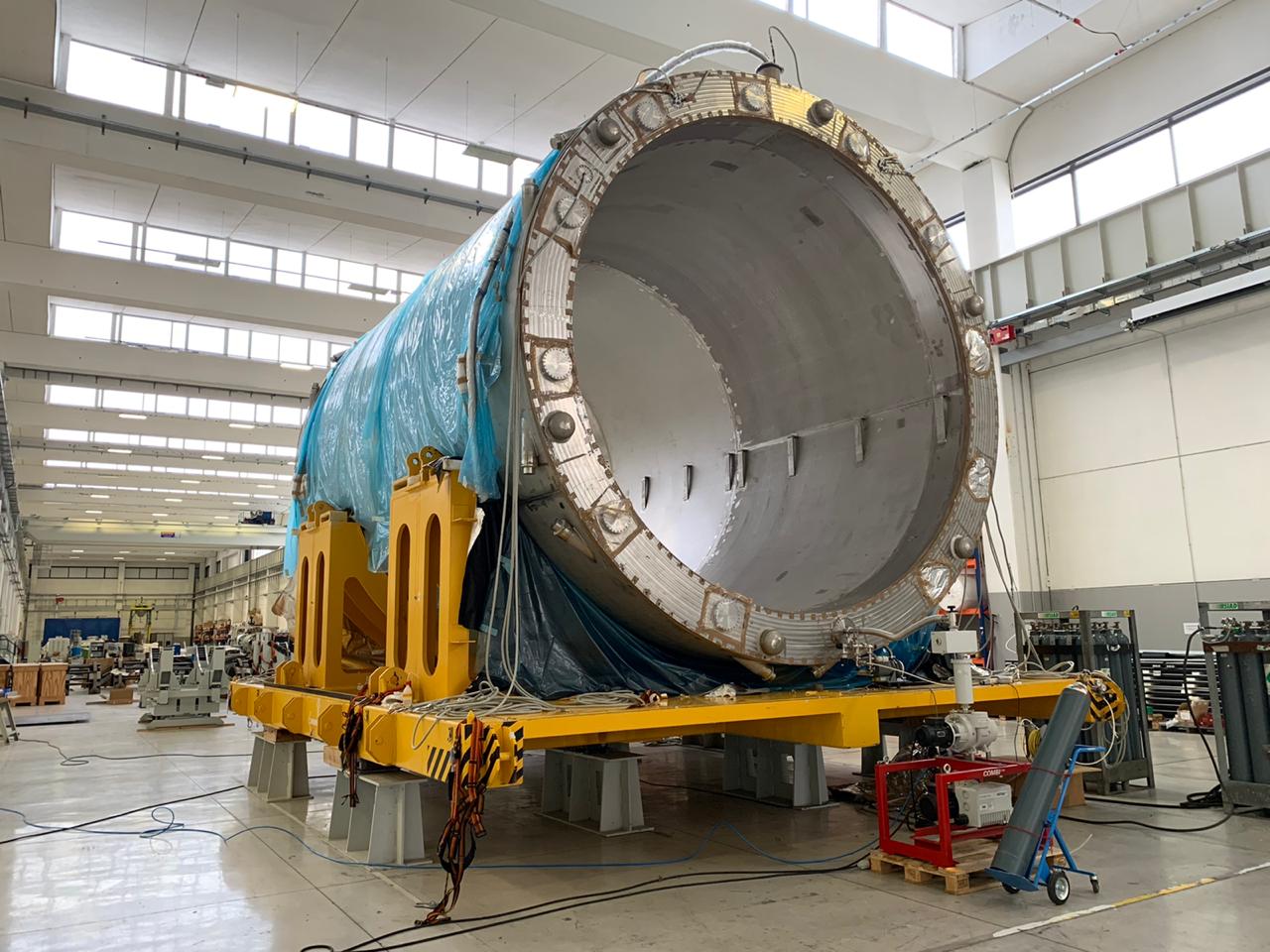 Solenoid before shipment to Russia at the site in Italy
Solenoid before shipment to Russia at the site in Italy
 3D model of the NICA complex with the major nodes (linear accelerator, Booster, Nuclotron, collider ring, electron cooling, MPD and SPD detectors)
3D model of the NICA complex with the major nodes (linear accelerator, Booster, Nuclotron, collider ring, electron cooling, MPD and SPD detectors)

